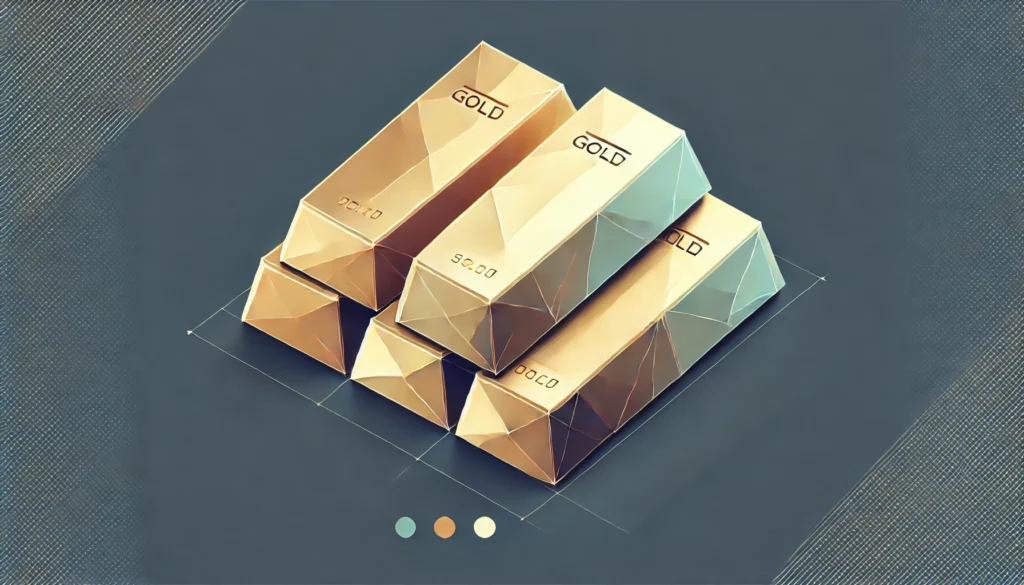Gold Price: Everything You Need to Know

The gold price is a crucial indicator in the global financial world, impacting markets, government decisions, central banks, investors, and individual savers. In this article, we delve into the key factors influencing the gold price, provide an overview of its historical development, and offer insights into the future prospects of this valuable precious metal.
What is the Gold Price and Why is It Important?
Gold indicates the value of a specific amount of gold in a given currency, usually quoted in U.S. dollars per ounce. Gold is considered a safe haven during times of economic uncertainty and is often viewed by investors as a hedge against inflation and currency risks. However, its importance extends beyond investment alone: gold plays a central role in the jewelry industry, technology, and as a reserve currency.

Historical Development of the Gold Price
The Gold Price in the 20th Century
Until the 1970s, gold remained relatively stable, as it was tied to the U.S. dollar under the gold standard. It was only after President Richard Nixon abandoned the gold standard in 1971 that the gold price began to fluctuate, being left to the free market.
1970s: This decade saw a dramatic rise in gold. From around $35 per ounce, it soared to over $800 per ounce by 1980. This surge was driven by a combination of high inflation, geopolitical tensions, and economic uncertainty.
1980s and 1990s: After peaking in 1980, gold stabilized in the following decades at lower levels. In the 1990s, it typically hovered between $300 and $400 per ounce, as the global economy was relatively stable, reducing the demand for gold as a safe haven.
The Gold Price in the 21st Century
The 21st century marked a new era for gold. Faced with global economic uncertainties, including the dot-com bubble, the 9/11 terrorist attacks, and the global financial crisis of 2008, gold began to rise steadily.
2000s: The early 2000s saw gold begin to climb, driven by growing uncertainty in financial markets and increased demand for safe assets. In 2008, during the global financial crisis, the gold price surpassed $1,000 per ounce for the first time.
2010s: The upward trend continued, and in 2011, gold reached a new all-time high of around $1,900 per ounce. After this peak, the price declined and stabilized in the following years, trading mostly between $1,200 and $1,300 per ounce.
2020 and Beyond: In recent years, gold surged again, reaching a new all-time high of over $2,000 per ounce in 2020 during the COVID-19 pandemic. The economic impacts of the pandemic, including extreme monetary easing measures and uncertainties about global economic recovery, drove demand for gold to new heights.

Factors Influencing the Gold Price
Gold is influenced by a variety of factors, both short-term and long-term. Some of the most significant factors include:
1. Economic Uncertainty
Gold is often viewed as a safe haven during times of economic turbulence. When global market uncertainties increase, such as during a recession, geopolitical tensions, or financial crises, investors tend to buy gold to protect their wealth. This increased demand drives the gold price higher.
2. Inflation and Currency Devaluation
Gold is frequently used as a hedge against inflation. When inflation rises and currency purchasing power declines, investors seek ways to protect their capital. Gold retains its value better than many other assets, leading to higher demand and an increase in the gold price.
3. Interest Rates and Monetary Policy
Interest rates significantly impact the gold price. Low interest rates make fixed-income investments less attractive, increasing demand for alternative assets like gold. Additionally, low interest rates often lead to currency depreciation, which in turn causes the gold price to rise.
4. Supply and Demand
Physical supply and demand for gold also play a crucial role. Supply is influenced by gold mining production, recycling, and central bank sales. Demand comes from various sectors, including jewelry, industrial applications, and investment. Fluctuations in these areas can affect the gold price.
5. Geopolitical Events
Crises and geopolitical uncertainties, such as wars, trade conflicts, or political instability, can also lead to a rise in the price. In such times, investors seek safe havens, and gold is often the preferred choice.
Future Outlook: Gold Price Prediction
The future development of gold remains a topic of great interest and speculation. Some experts believe the gold price could continue to rise due to ongoing economic uncertainties, global debt levels, and expansive monetary policies. Others are more cautious, suggesting that a stabilization of the global economy could lead to a decline in gold demand.
Bullish Gold Prediction
In an optimistic scenario, gold could reach new highs in the coming years, particularly if inflation continues to rise and economic uncertainty persists. Some analysts predict that gold could surpass $3,000 per ounce in the next five to ten years if demand for safe assets remains strong.
Cautious Gold Prediction
A more cautious approach sees the gold stabilizing within a certain range, depending on how global markets develop. If the global economy recovers and inflation remains under control, the gold price could settle between $1,800 and $2,200 per ounce.
Bearish Gold Prediction
In a bearish scenario, where interest rates rise and economic stability returns, gold could decline again. Some pessimistic predictions suggest that gold could fall to around $1,500 per ounce or even lower in this case.

Conclusion: The Gold Price as a Central Indicator
Gold is a complex and often volatile indicator influenced by numerous global factors. Whether you are an experienced investor or a new entrant, understanding the dynamics behind the gold price is crucial for making informed decisions. While predicting the future of the gold price is challenging, gold remains a significant asset that plays an important role during times of economic uncertainty. Stay informed and keep an eye on developments in the gold market to capitalize on the opportunities that arise.